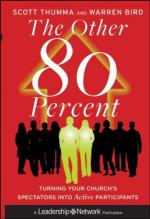Whilst I was lamenting this sudden Desolation that had been made before me, the whole Scene vanished: In the Room of the frightful Spectres, there now entered a second Dance of Apparitions very agreeably matched together, and made up of very amiable Phantoms. The first Pair was Liberty, with Monarchy at her right Hand: The Second was Moderation leading in Religion; and the third a Person whom I had never seen, [8] with the genius of Great Britain. At their first Entrance the Lady reviv’d, the Bags swell’d to their former Bulk, the Piles of Faggots and Heaps of Paper changed into Pyramids of Guineas: [9] And for my own part I was so transported with Joy, that I awaked, tho’ I must confess I would fain have fallen asleep again to have closed my Vision, if I could have done it.
[Footnote 1: The Bank of England was then only 17 years old. It was founded in 1694, and grew out of a loan of L1,200,000 for the public service, for which the lenders—so low was the public credit—were to have 8 per cent. interest, four thousand a year for expense of management, and a charter for 10 years, afterwards renewed from time to time, as the ‘Governor and Company of the Bank of England.’]
[Footnote 2: Magna Charta Libertatum, the Great Charter of Liberties obtained by the barons of King John, June 16, 1215, not only asserted rights of the subject against despotic power of the king, but included among them right of insurrection against royal authority unlawfully exerted.]
[Footnote 3: The Act of Uniformity, passed May 19, 1662, withheld promotion in the Church from all who had not received episcopal ordination, and required of all clergy assent to the contents of the Prayer Book on pain of being deprived of their spiritual promotion. It forbade all changes in matters of belief otherwise than by the king in Parliament. While it barred the unconstitutional exercise of a dispensing power by the king, and kept the settlement of its faith out of the hands of the clergy and in those of the people, it was so contrived also according to the temper of the majority that it served as a test act for the English Hierarchy, and cast out of the Church, as Nonconformists, those best members of its Puritan clergy, about two thousand in number, whose faith was sincere enough to make them sacrifice their livings to their sense of truth.]
[Footnote 4: The Act of Toleration, with which Addison balances the Act of Uniformity, was passed in the first year of William and Mary, and confirmed in the 10th year of Queen Anne, the year in which this Essay was written. By it all persons dissenting from the Church of England, except Roman Catholics and persons denying the Trinity, were relieved from such acts against Nonconformity as restrained their religious liberty and right of public worship, on condition that they took the oaths of allegiance and supremacy, subscribed a declaration against transubstantiation, and, if dissenting ministers, subscribed also to certain of the Thirty-Nine Articles.]




